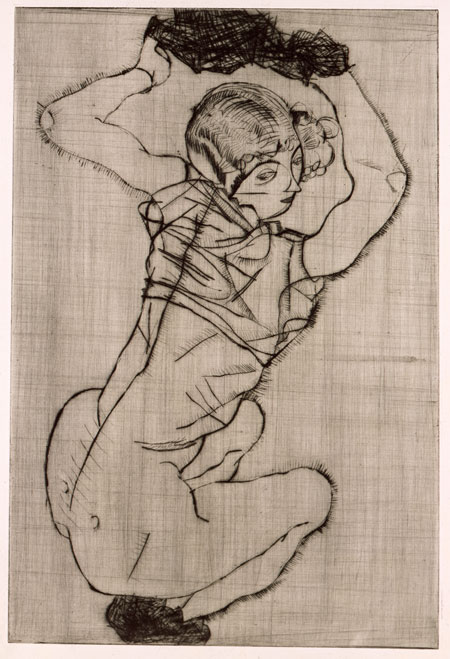Egon Schiele, Crouching Woman (1914)
- Barber Institute of Fine Arts

Fig.1 Egon Schiele, ‘Crouching Woman’ (1914). © The Henry Barber Trust. Image Courtesy of the Barber Institute of Fine Arts, University of Birmingham
Hysteria was recognised in Vienna in the 1900s as a ‘female’ illness that was believed to be caused by repressed trauma. It manifested through physical symptoms, including hysteric outbursts during which the affected patient would have fits and seizures, although it varied as each case was unique. It is no longer a recognised illness and was most likely to have been caused by varying mental health illnesses experienced by different patients. However, during the fin de siècle, people were fascinated with hysteria; photographs of hysterical women were widely circulated, and this widespread curiosity bled into the art world. The visual language of hysteria was created - images of weak and childlike women with wiry hair, thin limbs and spindly fingers, and often an arched back, were common-place at the time and can be seen in the work of famous Secessionist.
In Crouching Woman, this debilitated female body is shown to be vulnerable and uncomfortable, she is entirely exposed to the viewers gaze. The sexualisation of child-like ailing female bodies is a regular occurrence in Schiele’s work and many of his contemporaries. These images can be hard to look at due to the unsettling nature of their subject. They showcase an unfortunate truth about the sexualisation of young female bodies at the turn of the twentieth century.